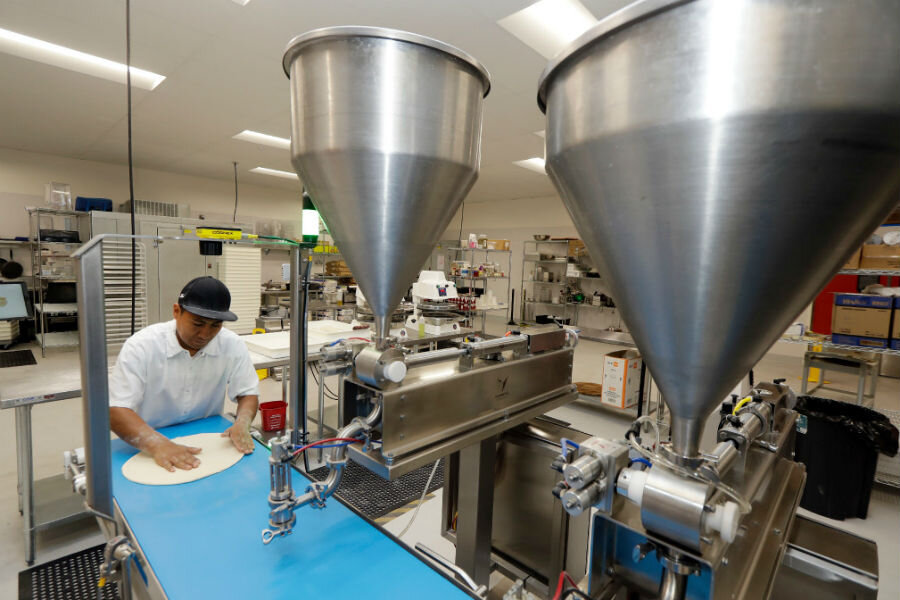Is a pizza chain run by robots the future of fast food?
Loading...
Are robots the future of pizza?
One chain seems to think so. Zume Pizza, based out of Mountain View, Calif., has replaced human chefs with robotic ones, creating what its owners call a "co-bot situation."
The restaurant, which opened its doors in April, reflects to a more extreme extent the gradual shift that many fast food and fast casual restaurants are making toward more in-restaurant automation, as technology advances and demands for higher minimum wage spread across the country. But while Zume and other restaurants have been able to save money by hiring more robots and fewer workers, some experts say we shouldn't expect robots to fully replace us anytime soon.
Zume has fewer employees than a typical pizza chain, but the sous chefs, software engineers, and other workers that it does employ receive full benefits, education subsidies, and shares in the business. The company, which began hiring in September of 2015, has never had an employee quit, said Julia Collins, Zume's co-founder and co-chief executive officer.
Furthermore, by replacing most of its chef positions with intelligent machines, the company has been able to cut its labor costs in half, allowing for a bigger budget for higher-quality ingredients.
"What we are doing is leveraging the power of this evolution of automation, these intelligent robots, to put better food on people's tables," Ms. Collins told CNBC. "...There are humans and robots collaborating to make better food, to make more fulfilling jobs and to make a more stable working environment for the folks that are working with us."
Earlier this week, Zume unveiled a new pizza delivery truck equipped with 56 ovens and manned by just one employee, whose only tasks are driving the truck, slicing the pizza, and delivering it to the doorstep. Customers place their order through an app, a method that many fast food and fast casual restaurants, including Panera Bread and Five Guys Burgers and Fries, now offer as an alternative to standing in line.
A number of other establishments, including Olive Garden and Buffalo Wild Wings, now also offer customers the option to order via in-restaurant tablet or kiosk, virtually eliminating the need for humans at the counter. As Andy Puzder, chief executive officer of CKE Restaurants, wrote for The Wall Street Journal in March:
In 2015, 14 cities and states approved $15 minimum wages—double the current federal minimum. Additionally, four states, 20 cities and one county now have mandatory paid-sick-leave laws generally requiring a paid week of time off each year per covered employee. And then there’s the Affordable Care Act, which further raises employer costs.
Dramatic increases in labor costs have a significant effect on the restaurant industry, where profit margins are pennies on the dollar and labor makes up about a third of total expenses. As a result, restaurants are looking to reduce costs while maintaining service and food quality.
Despite the benefits of automation, some say a full robot takeover of the food service industry is unlikely. Darren Tristano, a food industry expert with the research firm Technomic, forecasted in 2014 that the fast food work force would be reduced only by 5 to 10 percent in the coming decades.
"If you look at the thousands of years that consumers have been served alcohol and food by people, it's hard to imagine that things will change that quickly," he told CNN Money.
And others predict that while certain jobs may become obsolete, the workers who once held those jobs won't be rendered unemployed.
"Machines are indeed replacing humans – and replicating what we thought were uniquely human skills – at a faster rate than many of us thought possible until recently," writes Michael Jones, an assistant professor in economics at the University of Cincinnati, for The Washington Post. "But a focus on technology’s substitutionary (or replacement) role fails to appreciate how it also can be complementary. Job loss in some occupations will certainly continue, but it will be accompanied by gains in different fields, just as in the past."








